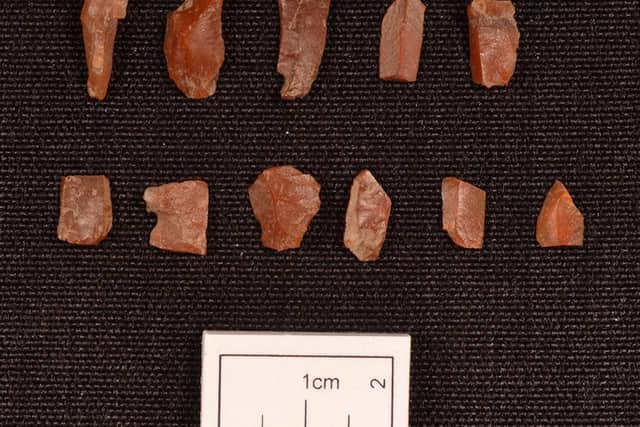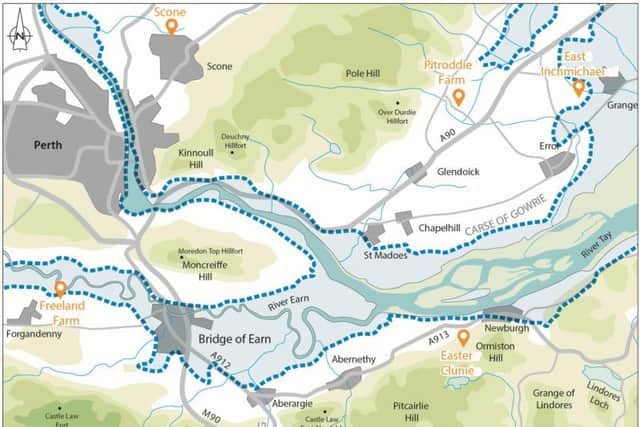Haul of hundreds of hunter gatherer tools sheds light on Scotland's earliest residents


The finds were made by archaeologists working around the River Tay estuary just south of Perth.
The pieces, found on Freeland Farm, date to somewhere between 9,800BC and 4,000BC and are made of local carnelian stone.
Advertisement
Hide AdAdvertisement
Hide AdThe scale of the find suggests that the area was home to a several small settlements close to the river with the tools used for hunting, skinning as well as processing animal meat and skins for food, clothes, bedding and tents.


Experts believe the use of the distinctive brown-coloured material for the tools could have come to define the identity of the people who used them.
Archaeologist Torben Ballin, a co-author of the report into the finds, said: "It is difficult to say how the Mesolithic people of Freeland Farm perceived their carnelian, but it is likely that the brown colour had special meaning to them, for example as a means of identifying themselves as belonging to a specific social group.
"They may have seen themselves, and been seen by hunter-gatherer groups in neighbouring territories, as ‘those with brown tool kits’, just like people on Arran may have seen themselves as ‘those with black tool kits’ and people on Rhum as ‘those with green tool kits'."


The project followed on from earlier work by Dundee University and investigated large parts of the lower-lying fields of the Tay estuary..
The team identified areas where hunting, fishing and gathering was likely to have taken place by a mobile Mesolithic population, with the search for artefacts then launched.
A total of 707 pieces of stone tools were found in fields at what is now Freeland Farm with the haul containing broadblades, microblades, scrapers and burins.
The volume of artefacts founds and the way they were scattered across most of the site suggest the entire area may have been visited and revisited over a long period.
Advertisement
Hide AdAdvertisement
Hide AdA large number of individual small settlements may once have been found here, it is believed.
The findings come as part of The Early Settlers Project, which involved local people in finding out more about the prehistory of the River Tay. Perth and Kinross Heritage Trust was also involved. The report into the project has been published by Archaeology Reports Online.